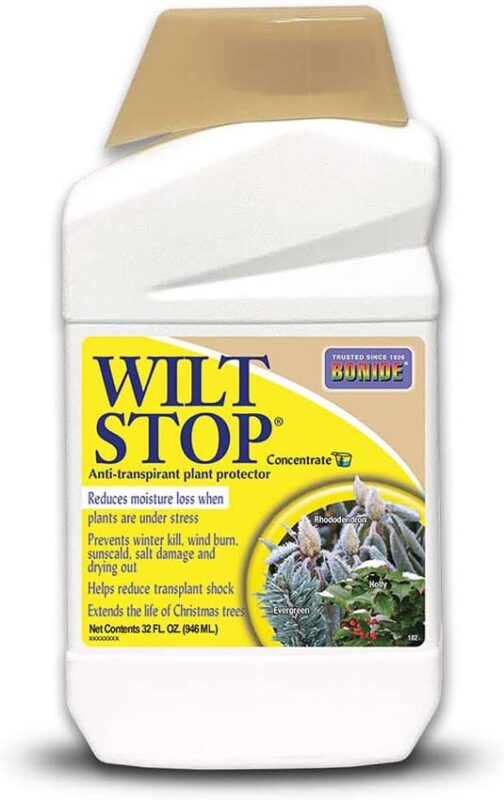In the Northeastern United States, most amateur and professional gardeners have experienced the damaging effects of winter burn on their evergreen trees and shrubs. Learning how to protect shrubs from winter burn can help you avoid this common problem.
What is Winter Burn?
When an evergreen tree or shrub loses more water than it can take in, the result is winter burn. Several factors contribute to winter burn in evergreen trees and shrubs.
What Causes Winter Burn?
Evergreen plants transpire water, even during the winter when they are dormant. When you have frozen ground, they can’t bring up enough water in their roots to support the water loss in their needles, which causes desiccation, often resulting in brown and red foliage.
Role of Cold Temperatures
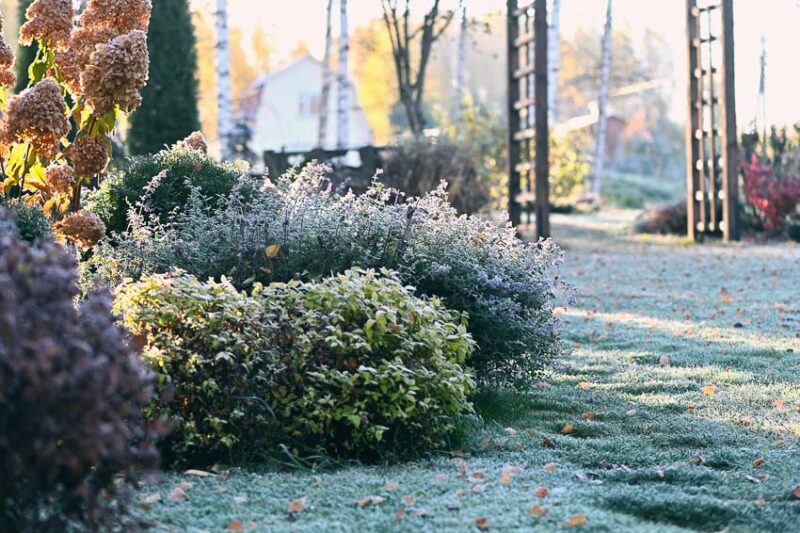
Cold temperatures freeze the ground, which makes it impossible for plants to draw water into their vascular system. Plants get dehydrated in the winter because they can’t replace the water lost in their leaves and needles. Sometimes frozen ground dries out the roots and kills them.
Impact of Wind and Sun Exposure
Sun and wind exacerbate the situation. Even in the winter, the sun will cause evergreen plants to transpire, losing water through their foliage. Normally, this water loss is replaced by water absorbed through the root system, but if the ground is frozen, the plants can suffer from dehydration and even die.
Dry, cold winter wind also contributes to winter burning because it causes even more desiccation. Planting your trees and shrubs out of windy areas or protecting them with a windbreak can prevent this.
Identifying Symptoms of Winter Burn
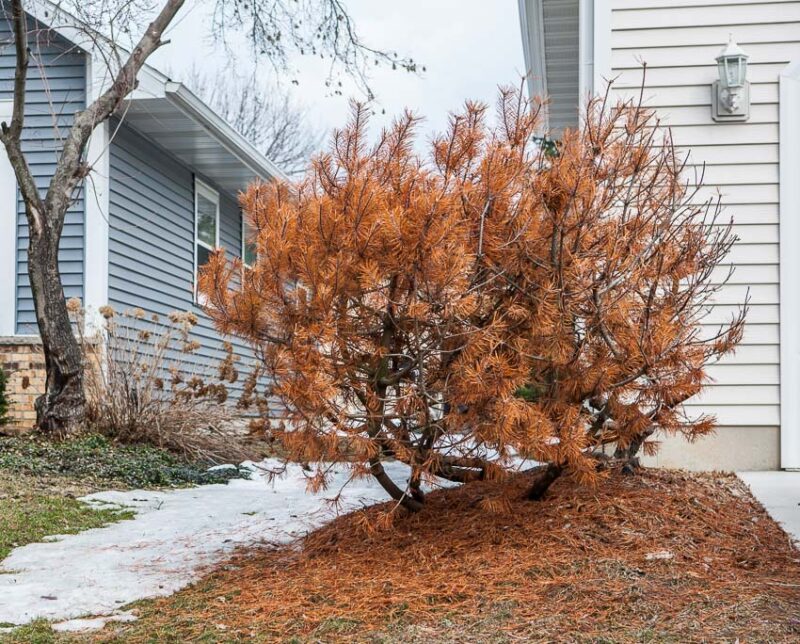
What does winter burn on evergreens look like? Here are some of the symptoms to watch for:
- Discolored or brown foliage
- Foliage and twigs feel dry and brittle
- Leaf and needle drop
- Broken limbs
- Cracked bark
Why Does Winter Burn Affect Evergreens and Shrubs?
The physiology of evergreen trees and shrubs, combined with the environmental factors in the Northeast, leaves them susceptible to damage from harsh winter conditions.
The Physiology of Evergreens and Shrubs
Unlike deciduous trees and shrubs, evergreen plants do not go completely dormant in the winter. Even though they undergo seasonal changes, they are still photosynthesizing and transpiring during the winter.
The year-round transpiration process and persistent leaves and needles require evergreen plants to maintain a supply of water to their leaves and needles throughout the winter.
Environmental Factors in the Northeast
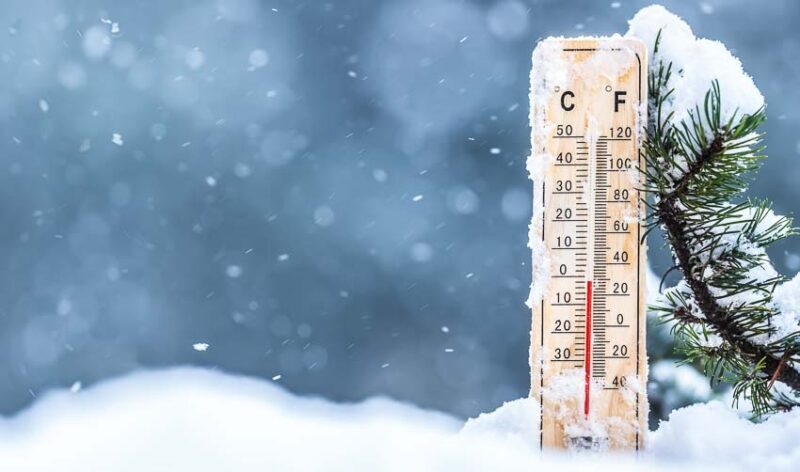
The Northeastern United States is famous for its harsh and unpredictable winters, with severe cold often taking a toll on evergreen trees and shrubs.
Severe Cold and Wind Chills
The average low in the Northeastern US is about 22°F (6°C). The iconic nor’easter storms with sub-zero temperatures and wind chills that blow in from the northeast off the Atlantic coast cause the most damage to trees and shrubs in this area.
Frequent Freeze and Thaw Cycles
Combined with the brutally cold lows, constant freeze and thaw cycles add even more stress to plants in the Northeast. Freezing and thawing ground can raise and lower plants in the ground, causing damage to root systems.
Benefits of Protecting Shrubs from Winter Burn
The good news about evergreen winter burn is that you can avoid it by properly protecting your trees and shrubs.
Extended Lifespan of Your Plants
Young plants that are not well-established are more prone to winter damage, but you should take care to protect shrubs of any age to extend their lifespan and maintain a beautiful aesthetic in your yard.
Winter burned trees and shrubs are more susceptible to diseases and insect infestations, which can cause premature aging and death. In fact, if you notice an infestation in a plant damaged by winter burn, it’s often better to remove it to prevent the spread of pathogens.
Maintaining the Aesthetic Beauty of Your Landscape
Homeowners who take considerable pride in their yards will be most upset by the damage caused by winter burn. Instead of vibrant green foliage, the result is red and brown patches that can ruin the aesthetics of your landscape.
Protect your shrubs and trees before winter hits to prevent unsightly browning caused by winter burning. A minimal effort will go a long way to ensuring that your landscape retains its beautiful and vibrant appearance despite the harsh weather conditions.
How to Protect Shrubs from Winter Burn in the Northeast
In New England and the mid-Atlantic states that make up the Northeast region, protecting your shrubs from winter burn is essential if you want to maintain year-round health and beauty in your yard.
Choosing the Right Plant Location
One of the best strategies to prevent winter burn on arborvitae and other evergreens is to select the right location.
Avoiding Windy and Exposed Sites
Avoid the damaging effects of sun and wind exposure by planting your evergreen trees and shrubs in sheltered locations. Harsh winter winds are more likely to hit plants in the open, and those growing in sunny locations facing south or west are more prone to damage.
Leveraging Natural Barriers
Your home and outbuildings provide natural barriers to wind and sun and can help you avoid winter burned evergreens. Planting small trees on the windward side of larger, established evergreens is another good strategy.
Mulching and Ground Cover Techniques
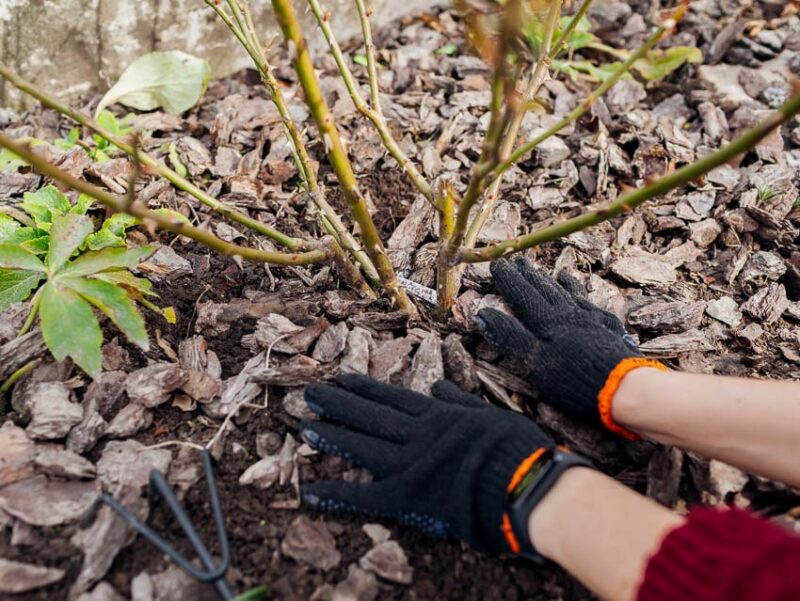
Protecting the root system is another technique that helps prevent winter burn in plants.
Insulating the Root System
Adding mulch to the base of your evergreen trees and shrubs will help insulate the root system from freezing cold temperatures. It will protect the roots of your plants from freezing and drying out.
Even though the ground will still freeze, it won’t freeze as hard if you mulch it well. Mulches can provide just enough protection to make a difference.
Conserving Soil Moisture
Mulch also conserves soil moisture, which is one of the main reasons it’s used during the summer. Just like what happens in the summer when the warm air causes moisture to evaporate, the dry winter air will pull moisture out of the soil and dehydrate your evergreens.
Applying Anti-Desiccant Sprays
Since transpiration in evergreens occurs year-round, applying an anti-desiccant to the foliage is another way to prevent water loss.
The Benefits of Protective Layers
Evergreens have a natural, waxy coating called cutin on their needles and leaves to help protect them from winter weather, but some need a little more protection to survive the extreme winter weather in the Northeast.
Most trees and shrubs will benefit from an anti-desiccant. You can avoid arborvitae and boxwood winter burn this way, two species that are more prone to winter burn than other evergreens. However, some evergreens, like waxy blue conifers like blue spruce, should not be treated with anti-desiccant.
When and How to Apply
Always follow the label instructions closely when applying anti-desiccant to your evergreen trees and shrubs.
- Apply when there is no rainfall in the forecast and temperatures are around 40 to 50°F (4 to 10°C).
- For best results, the foliage should be dry when you apply the spray, and it should have time to dry after it’s applied.
- The best time to apply anti-desiccants to evergreens in the Northeast is in late November to early December.
- Be sure to apply the anti-desiccant to the upper and lower parts of the foliage.
It’s important not to apply anti-desiccants too early. Plants send water from the foliage back to the roots as the temperatures drop in the fall, and if you apply it too soon, it will disrupt this process, which leads to cellular damage in the foliage.
How to Protect Evergreens from Winter Burn in the Northeast
The winters in the Northeast can be unforgiving, and you may need to use multiple strategies to protect evergreens from winter burn. Here are some more tips and techniques to prevent winter burn in trees and shrubs.
Regular Watering in the Fall
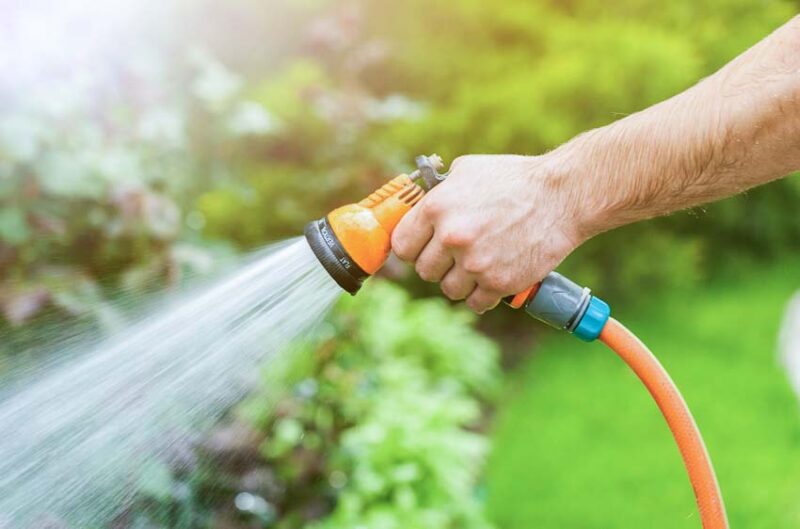
Your evergreen trees and shrubs will fare better through the winter if they start out well-hydrated in the fall. Evergreen plants don’t need as much water in the fall as in the summer, but they still need adequate moisture levels in the soil before going into the coldest parts of the year.
As the temperatures drop, taper off watering to once a week, depending on the weather, then every other week. Stop watering altogether after the ground freezes unless your region doesn’t get any rain for 10-14 days. Then, water deeply so the top 8 to 14 inches of soil are moist.
Using Protective Wraps and Screens
Several tree wrap products can be used to preserve the health of trees and shrubs. Burlap is one of the most common, but you can use tree wrap materials like polypropylene fabric, paper products, and corrugated cardboard.
Burlap and other materials can also be used to protect evergreen shrubs from the cold, drying winds that blow through the Northeast during the winter. Simply wrap your evergreen shrubs with burlap to keep them from drying out.
Worried about your garden as the cold approaches? Check out our guide to preparing your garden for winter!
How to Revive Shrubs & Evergreens from Winter Burn
When your landscape gets hit by winter burn, how can you tell if your evergreen trees and shrubs will recover?
Assessing the Damage
Your plants will likely recover from winter burn unless they are dead and brown from top to bottom. However, much of the damage may not appear until spring, when plants start to grow.
To assess winter burn damage and distinguish between dead and dormant branches, scrape the bark with your fingernail to see if the inner growth layer is green, indicating it’s still alive.
Proper Pruning Techniques
It can be hard to tell what parts of your evergreen are dead and what may recover. Prune away damaged branches immediately, but wait until new growth emerges before making cuts back to the first node or branch offshoot that still shows signs of life.
Fertilizing and Watering Regimen
Dry soils from autumn to winter can dehydrate evergreens, and when combined with the cold winds and freezing temperatures in the Northeast, your plants can become completely desiccated.
If there’s any life left in your evergreen, it will need regular watering to bring it back. You also need to fertilize it so that it has adequate nutrients so that it can regrow its lush green foliage.
Evergreens prefer acidic soil, but they still need a complete fertilizer. Choose one with adequate nitrogen to encourage green growth, like a 10-8-15 NPK. It’s also good practice to test your soil and provide the right pH for the type of plant you’re growing.
Get your lawn in gear before the cold arrives! Explore our Tips for Fall Lawn Care and guide to Preparing your Lawn for Winter.
FAQs About Protecting Shrubs & Evergreens from Winter Burn
Can shrubs fully recover from severe winter burn?
Most shrubs and trees will fully recover from severe winter burn damage, but it can take a long time, and there’s no guarantee. Even if a branch looks dead, it may still have some life in it, which you can test by scraping a small piece of bark with your fingernail.
Are certain shrub species more prone to winter burn?
All trees and shrubs are prone to winter burn under the wrong conditions, but some are more susceptible or may take longer to recover. Arborvitae winter burn is one of the most common, and boxwoods are another species commonly affected.
When is the best time to apply anti-desiccant sprays?
Apply anti-desiccant sprays when there is no rainfall in the forecast and temperatures are around 40 to 50°F (4 to 10°C). For best results, the foliage should be dry when you apply the spray, and it should have time to dry after you apply it.
Can overwatering also contribute to winter burn?
Anything that adds to a plant’s stress will make it more susceptible to the damaging effects of freezing temperatures and harsh winter conditions. Well-hydrated plants are generally less prone to winter burn. Too much water will saturate the ground, and when it freezes, it will damage their root systems.
Do younger or older shrubs have a higher risk of winter burn?
Well-established plants have a lower risk of winter burn. Plants younger than two years old that don’t have deep, healthy root systems are more likely to suffer the negative effects of dehydration in the winter. They are also more likely to be damaged by freeze and thaw cycles.


